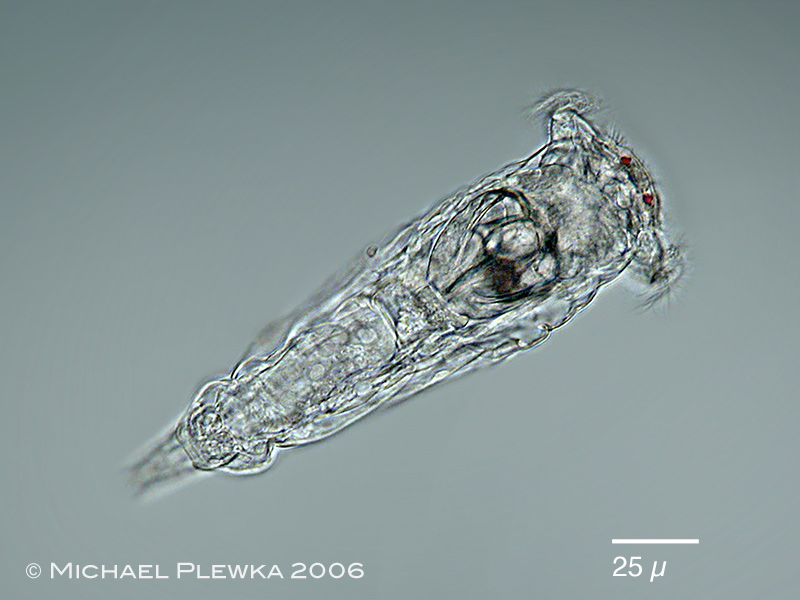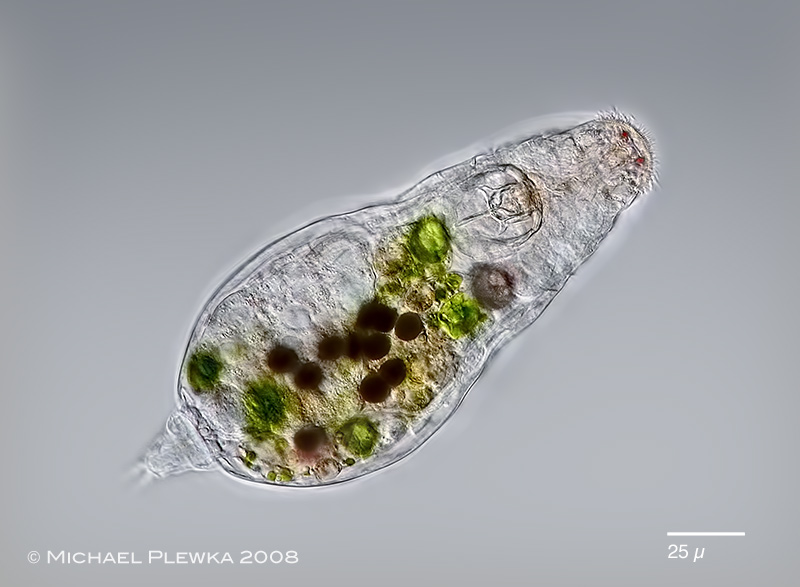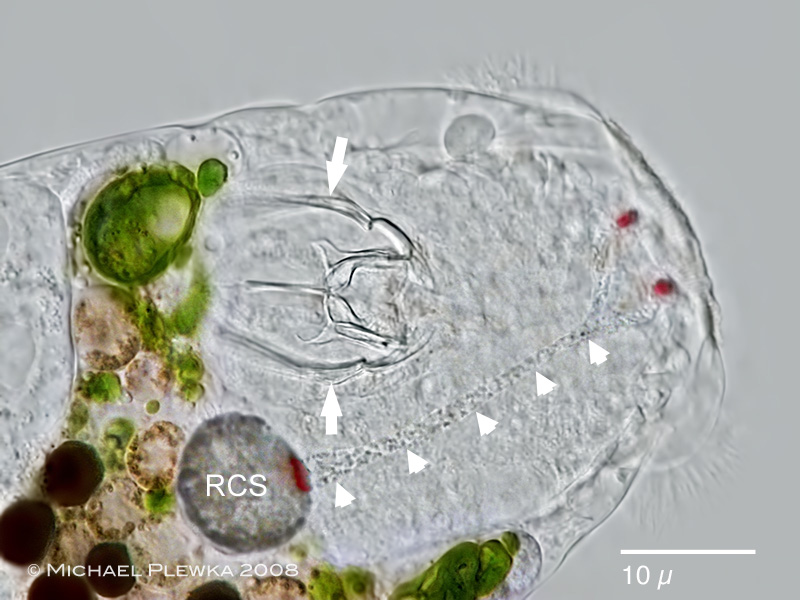| Itura aurita: normally this species has symbiotic algae in the digestive tract, but this specimen is colorless without zoochlorellae. (1) |
| |
 |
| Itura aurita, lateral view. The arrow points to the retrocerebral ogan, which is located posterior of the mastax in this species which is in contrast to Itura viridis. (1) |
| |
 |
| Itura aurita, dorsoventral view. Swimming is accomplished by the cilia of the auricles. (1) |
| |
 |
| Itura aurita, creeping specimen, dorsoventral view. In the stomach some digested are visible as dark-brown pellets. (2) |
| |
 |
Itura aurita, same specimen, compressed by coverslide. In the upper (left) part the virgate trophi can be seen. The manubria have no extensions on the outer side (arrows) as is the case with Itura viridis. Also visible is the retrocerebral sac with a red pigment spot in front. The excretory duct (arrowheads) of this retrocerebral sac is clearly longer in this species than in Itura viridis or Itura myersi, i.e. the retrocerebral sac is further posterior (2) |
| |
| |
| |
| Location: RUB, Bochum, NRW, Germany; Kalwes-Teiche (1); Hattingen Wodantal; NRW, Germany pond |
| Habitat: detritus (1); (2) |
| Date: 14.04.2006 (1); 22.04.2008 (2) |
| |
|
|
|